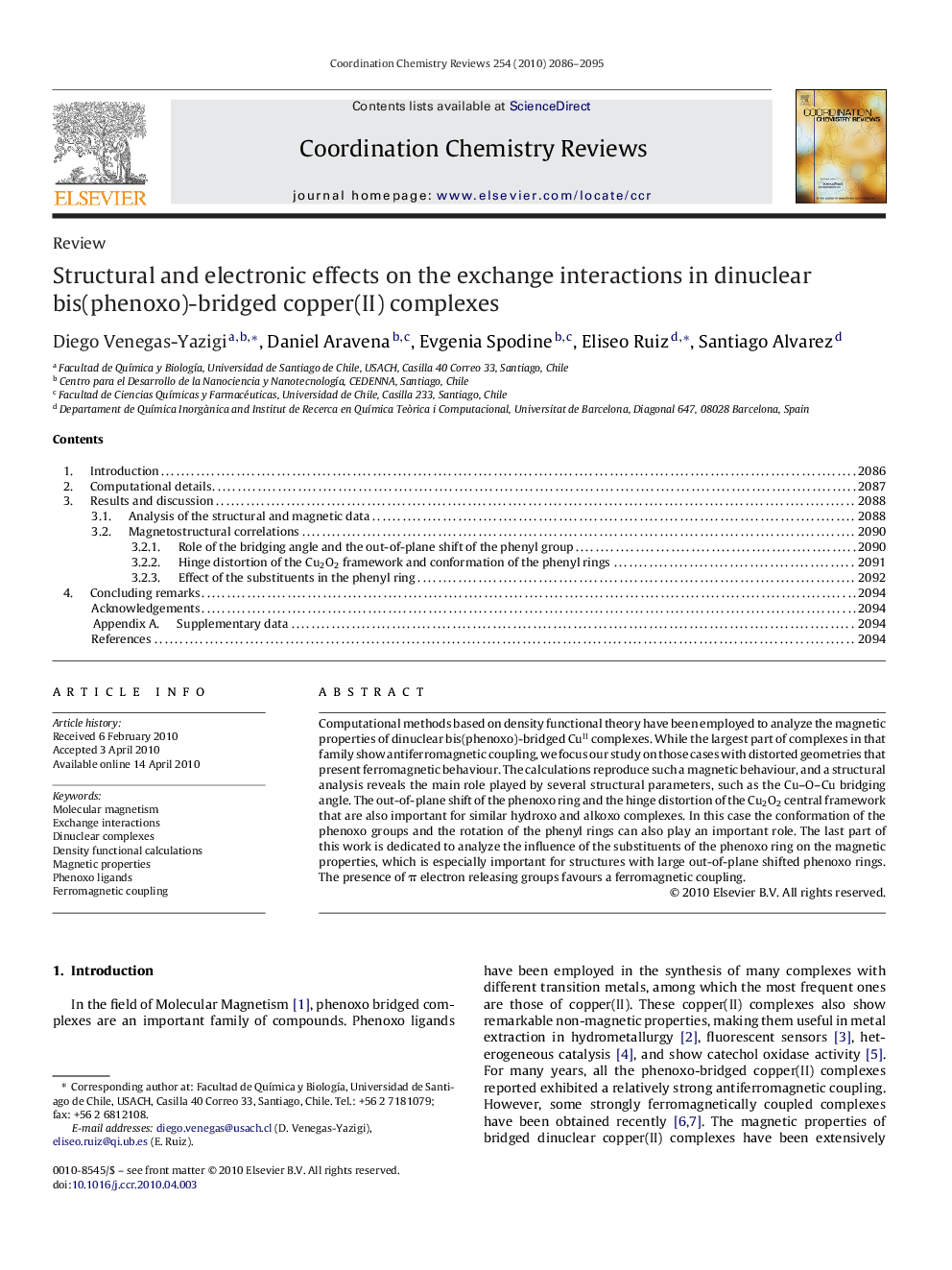| Article ID | Journal | Published Year | Pages | File Type |
|---|---|---|---|---|
| 1300636 | Coordination Chemistry Reviews | 2010 | 10 Pages |
Computational methods based on density functional theory have been employed to analyze the magnetic properties of dinuclear bis(phenoxo)-bridged CuII complexes. While the largest part of complexes in that family show antiferromagnetic coupling, we focus our study on those cases with distorted geometries that present ferromagnetic behaviour. The calculations reproduce such a magnetic behaviour, and a structural analysis reveals the main role played by several structural parameters, such as the Cu–O–Cu bridging angle. The out-of-plane shift of the phenoxo ring and the hinge distortion of the Cu2O2 central framework that are also important for similar hydroxo and alkoxo complexes. In this case the conformation of the phenoxo groups and the rotation of the phenyl rings can also play an important role. The last part of this work is dedicated to analyze the influence of the substituents of the phenoxo ring on the magnetic properties, which is especially important for structures with large out-of-plane shifted phenoxo rings. The presence of π electron releasing groups favours a ferromagnetic coupling.
Graphical abstractMagnetostructural correlations and ferromagnetic couplings: The relationship between the magnetic behaviour and the structure for dinuclear bis(phenoxo)-bridged CuII complexes has been investigated using theoretical methods based on density functional theory. These results allow to understand the origin of the ferromagnetic interaction in some recently synthesized complexes of this family.Figure optionsDownload full-size imageDownload high-quality image (91 K)Download as PowerPoint slide
